Progress!
06/15/2024. Today, maybe only today, this is the way to shoot 4x mosaics: center the Sun, defocus, use two layers of USPS plastic, gamma off, gain quite high (mostly to keep the flat from taking forever). Use the best 50 of 500 frames. Pseudo-flat each quarter, photomerge, pseudo-flat the output. ImPPG to deconvolve (probably a little too much, per usual) and brighten. Photoshop to finish. That worked. Today.
Click anything for a closer look.


A good flat is key, and the method described above worked best today. Aiming slightly away from the Sun through two layers of plastic with the telescope in focus also worked, though maybe not quite as well. If you don't want to defocus with an especially well-focused rig, try that. Even with the dual layer diffuser, aiming right at the Sun without defocusing had issues. However you take the flat, do NOT over-expose it, and when adjusting exposure for the solar quarters make sure that there are no detail-free hot-spots. The image during capture may be dimmer than you would really like. It's OK, really. You can fix that in post. Not a joke.
I also tried adding 10mm of extension and getting (just barely) a full-disk or easy 2x mosaic. Both results were crap and will not be seen here.
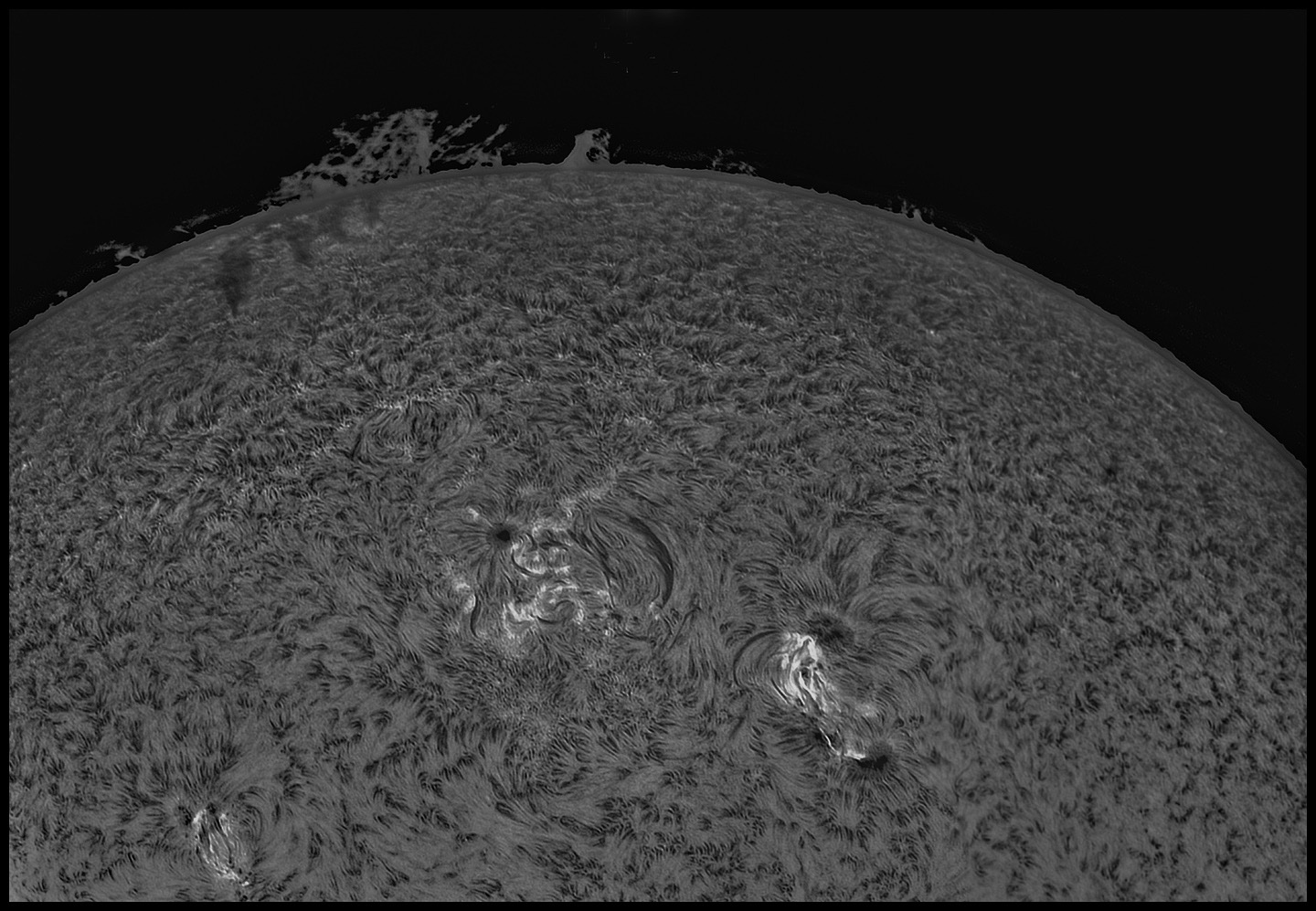
Three frame mosaic (left, right, and center). Dusky to hold all tones with bright flaring.
Tracking was spot on today; the air was by turns excellent and mediocre. Since tracking was good and there were long cloud-free intervals, I tried back to back videos of a small flaring sunspot group using a very small ROI at high gain for short exposures both with FireCapture gamma set to 40 and with gamma off. The clips with modest gamma regularly produced better final images. It was close, but that result seemed unambiguous. (I don't have matched "best efforts" to show from today's session and life is too short to re-develop some for show and tell.) Use the gamma option! Watch and maximize the FireCapture display of unique brightness levels if you want reassurance that you're doing more good than harm when opting to enable gamma during capture.
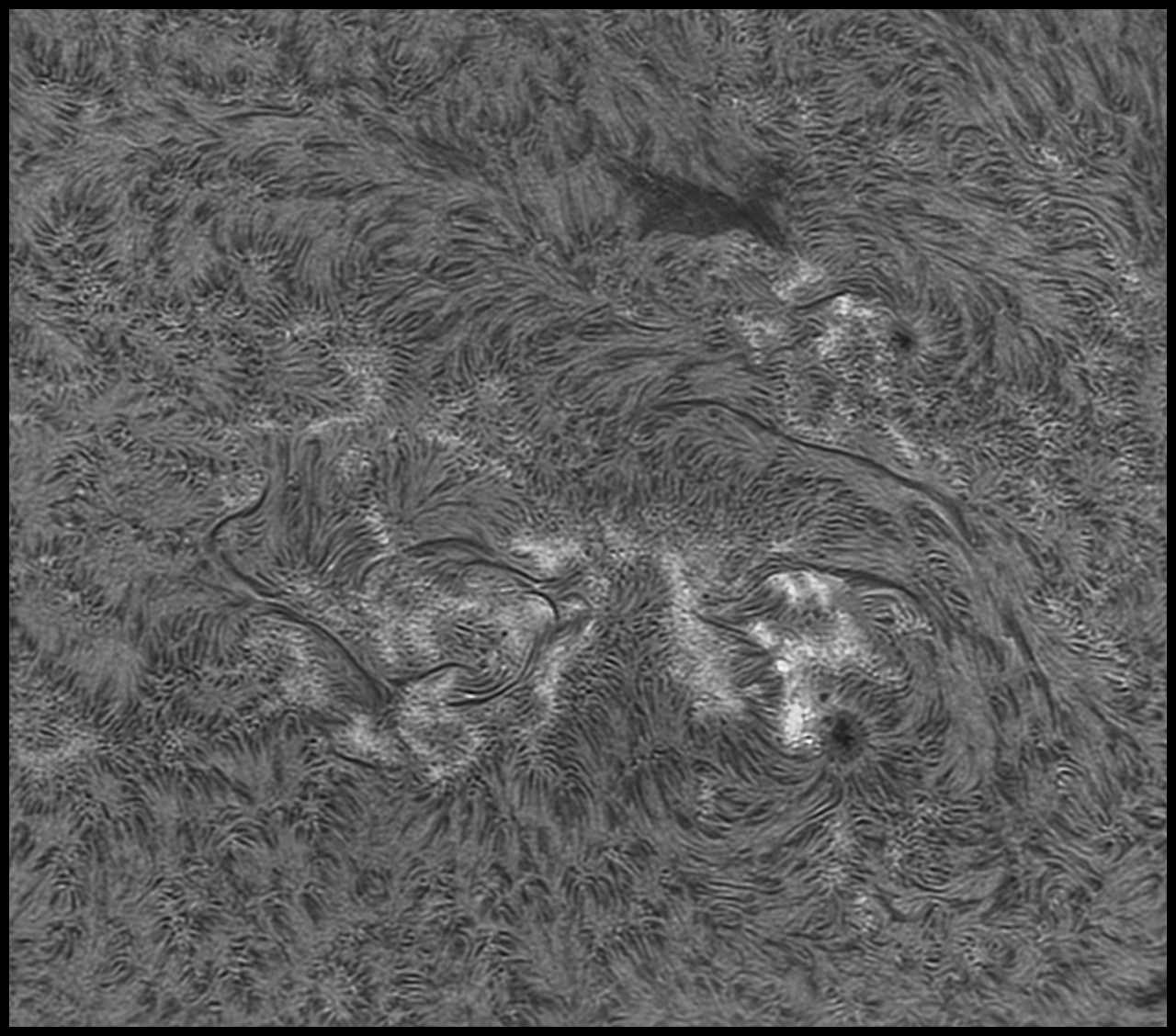
Two frame mosaic (top and bottom).
I would not disagree if you looked at the image just above and told me that I over-sharpen, that I am too aggressive with deconvolution. Often more than a little. I want those killer sharp thread-like details I see from larger telescopes, but they just aren't in there. Trying too hard introduces far more problems than it solves. So back off until more aperture is available. Here's an alternate treatment of the image just above:
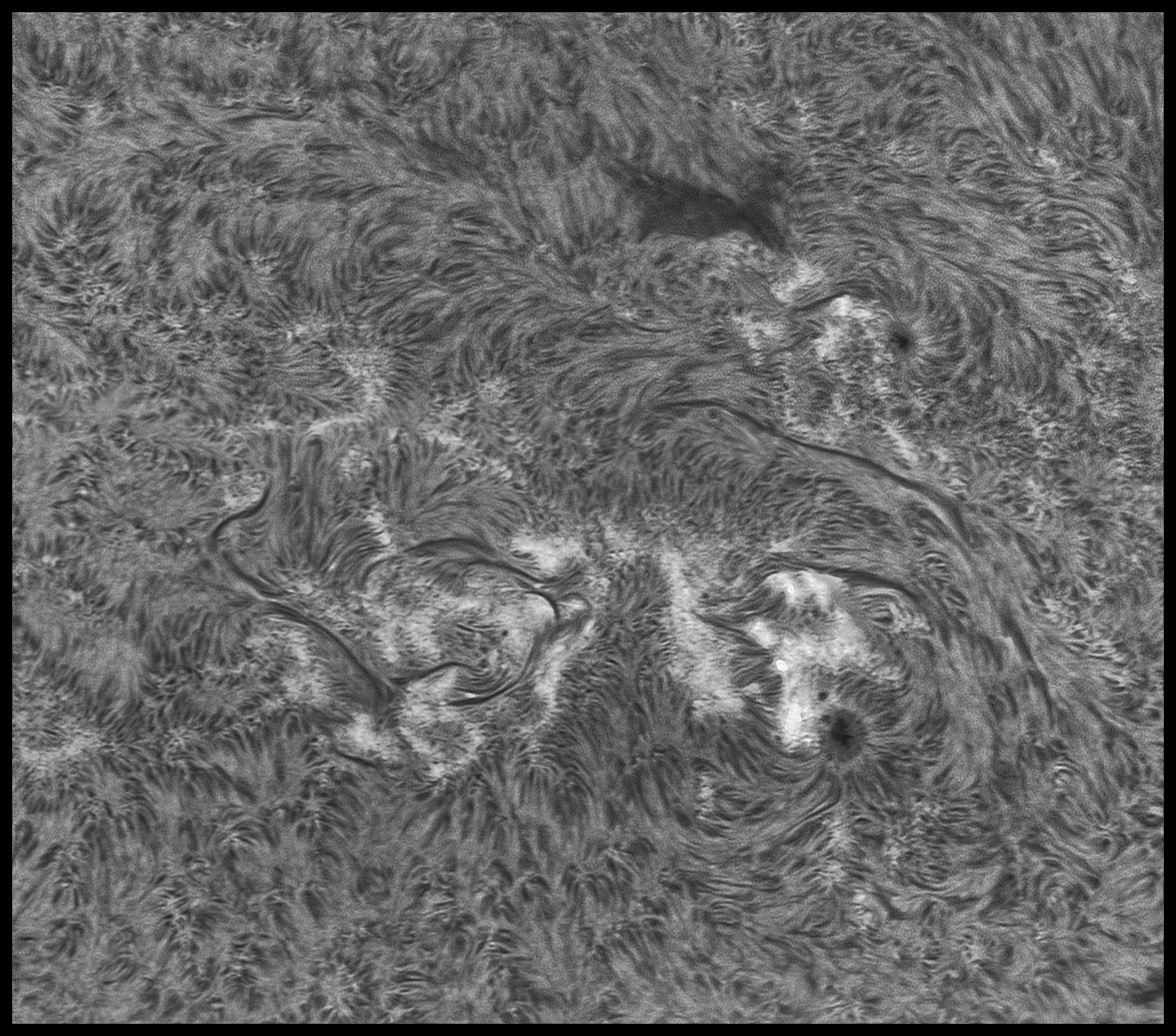
The differences are visible in the 720 pixel versions displayed, but in the 1440 pixel versions (click em), they're obvious, more so at full-rez. The second version is a clear winner.
This workflow differs in not abusing Lucy-Richardson deconvolution and relying more on Photoshop's straightforward sharpening algorithms. It's just an overall less ham-fisted process. From the AS!4 output, the second image was processed using USM, ImPPG (gently!), noise-reduction (mild!), sharpen, sharpen edges, resample down (smooth gradiants), sharpen (maybe with multiply and low weight), add contrast, then tweak tones with curves and levels. (Simple, right?) Anyway, the keys are reduced L-R and delayed noise reduction compared to prior bad habits.
We finally have a few straight days of cloudy skies (such an odd thing to be slightly grateful for). I brought stuff indoors and have improved the BRWms strain relief on the camera, will clean up this and that, and see you when the Sun comes out again.
Later that same night: I made a concerted effort to take a light hand with another image. Best 1,000 of 5,000 frames, gamma off. It's a very dull-looking TIFF file. I opened it with Adobe Raw, a tidge of dehaze, a little highlight and shadow control, cropped the unstacked regions. Then ImPPG for just enough deconvolution and returned to PS for finishing, including a gentle NR pass, resampling down, sharpening, and done.
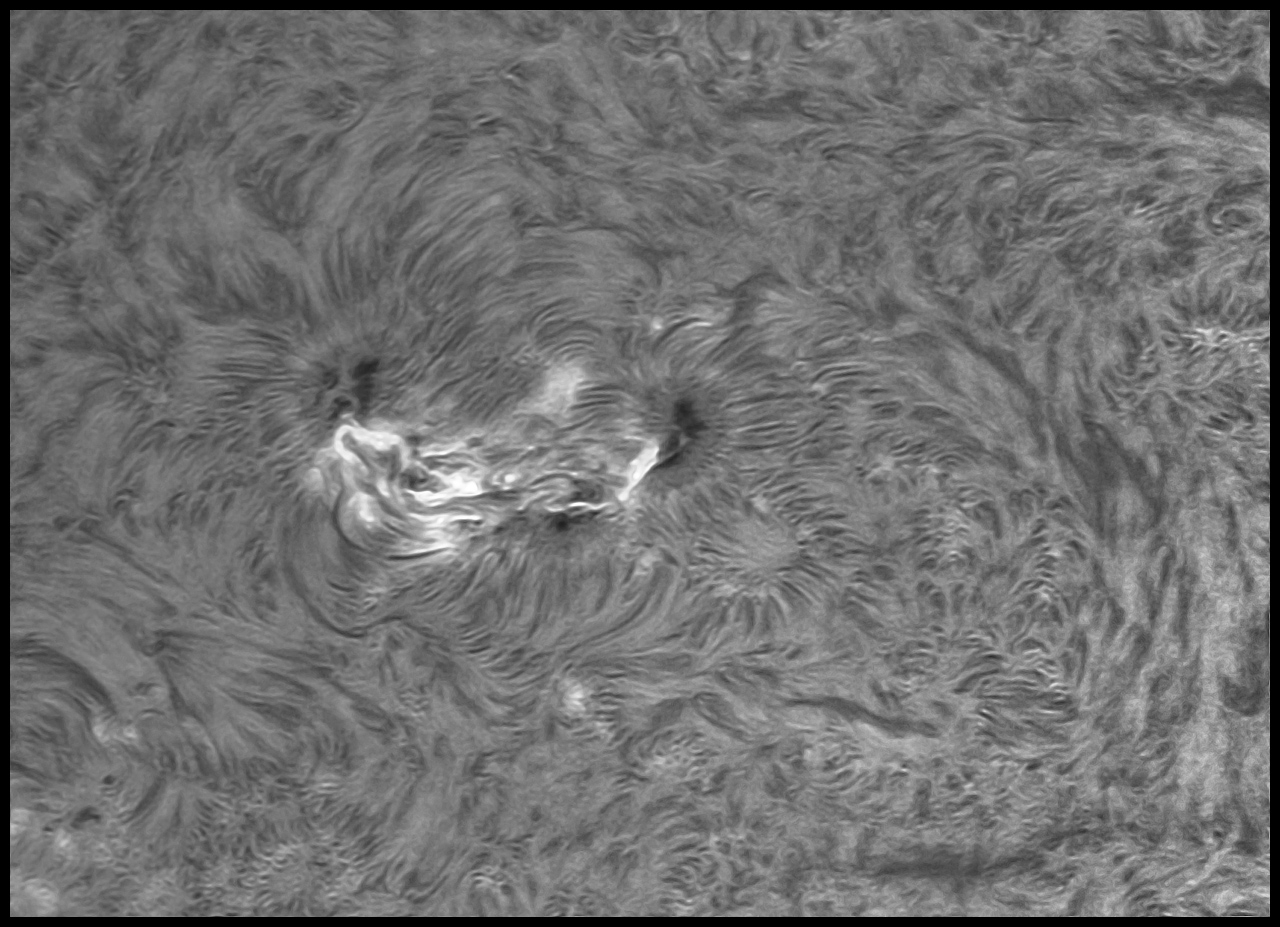
06/17/2024. Another day, another process.
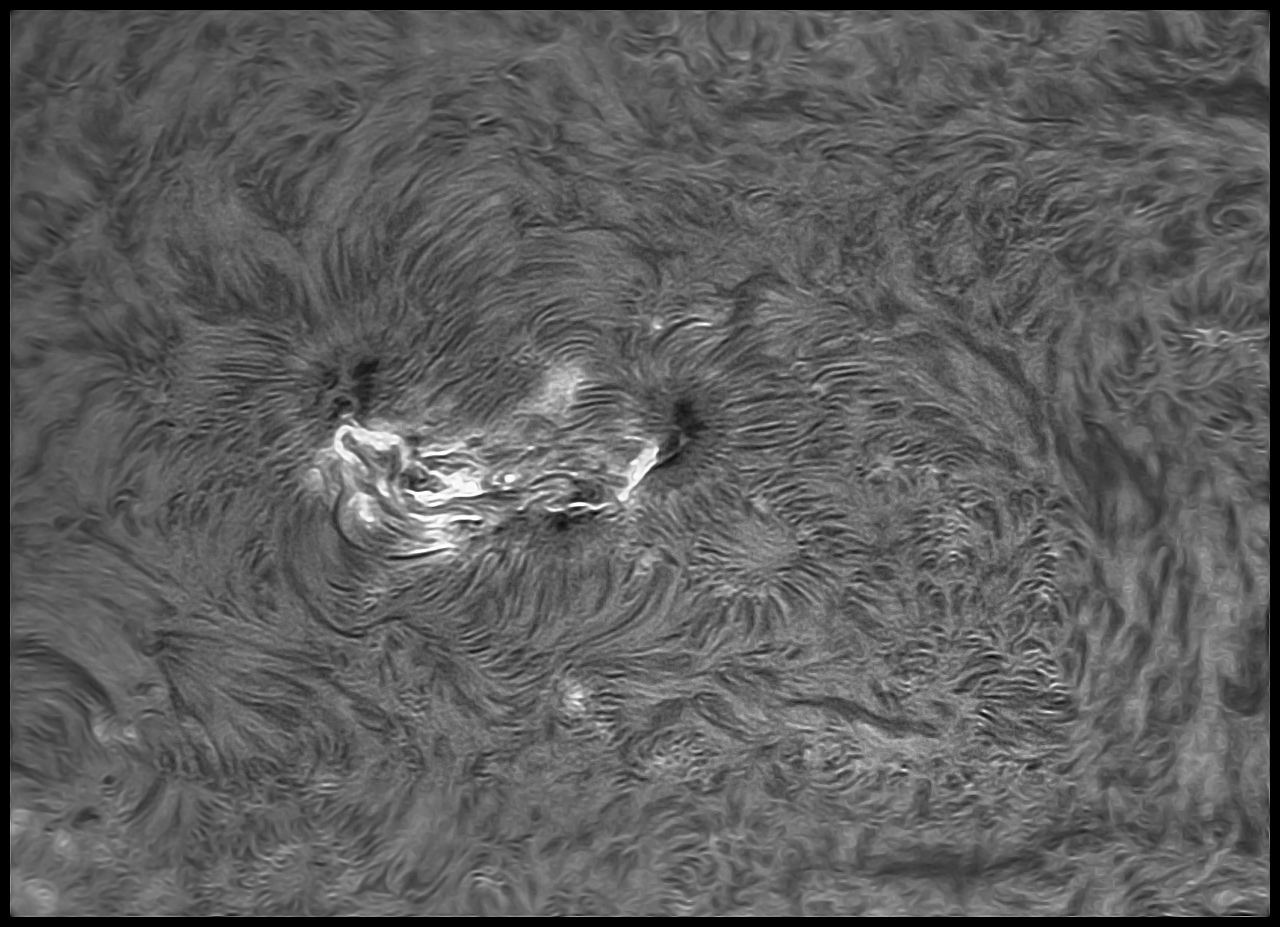
The "emboss" trick advocated on another solar imaging blog and used here some months back was neat enough, but a bit of a kludge. I think what was really called for was high-pass filtration and any of several blend modes. This seems to work especially well for relatively low-contrast, borderline excessive pixel scales. Try all sorts of hipass parameters and all sorts of blend modes. Surprises await within that technique.
:: top ::